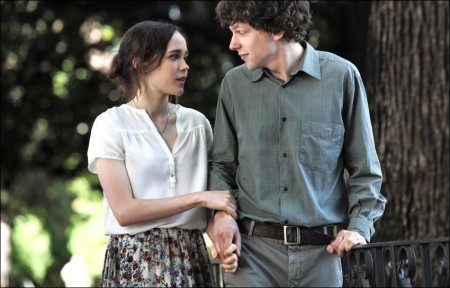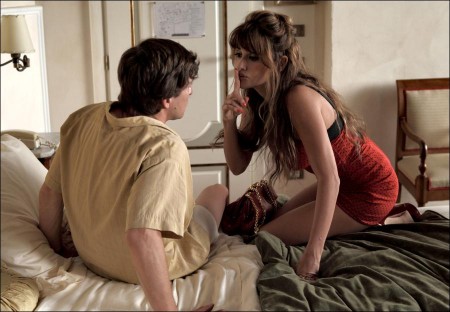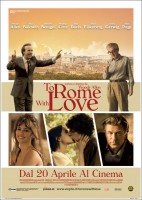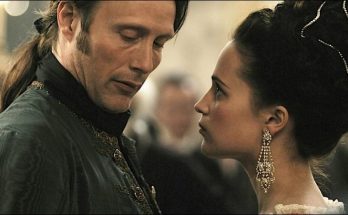In Rome, the America tourist Hayley meets the local lawyer Michelangelo on the street and soon they fall in love with each other. Hayley’s parents, the psychiatrist Phyllis and the retired music producer Jerry, travel to Rome to meet Michelangelo and his parents.
When Jerry listens to Michelangelo’s father Giancarlo singing opera in the shower, he is convinced that he is a talented opera singer. But there is a problem: Giancarlo can only sing in the shower. The couple Antonio and Milly travel to Rome to meet Antonio’s relatives that belong to the high society. Milly goes to the hairdresser while Antonio waits for her in the room. Milly gets lost in Rome and the prostitute Anna mistakenly goes to Antonio’s room. Out of the blue, his relatives arrive in the room and they believe Anna is Antonio’s wife.
Meanwhile the shy Milly meets her favorite actor Luca Salta (Antonio Albanese) and goes to his hotel room “to discuss about movies”. One day, the middle-class clerk Leopoldo becomes a celebrity and is hunted by the paparazzo. A couple of days later, he is forgotten by the media. The American architect John travels to Rome with his wife and feels nostalgic since he lived in the city thirty years ago when he was a student.
To Rome with Love is a 2012 magical realist romantic comedy film written, directed by and starring Woody Allen in his first acting appearance since 2006. The film is set in Rome, Italy; it was released in Italian theaters on April 13, 2012, and opened in Los Angeles and New York City on June 22, 2012.
The film features an ensemble cast, including Allen himself. The story is told in four separate vignettes: a clerk who wakes up to find himself a celebrity, an architect who takes a trip back to the street he lived on as a student, a young couple on their honeymoon, and an Italian funeral director whose uncanny singing ability enraptures his soon to be in-law, an American opera director.
Film Review for To Rome With Love
ter his unhappy experiences filming in London and what I considered an indifferent visit to Spain in Vicky Cristina Barcelona, Woody Allen was approaching peak form last year exploring the subject of nostalgia and cultural tourism in Midnight in Paris. He’s now moved on to a country in which a man called Oreste Lionello became nationally famous for dubbing Allen into Italian.
But his presence in Rome is not to do with money alone, though that’s an important incentive. It’s the city most closely associated with his southern European idol Federico Fellini, to whom he has often paid homage in the past (most notably with Stardust Memories and Radio Days), and indeed the cinematic idea of “the Eternal City”, as the place is referred to with half-mocking reverence, is central to his latest film.
To Rome with Love looks back to the omnibus films so popular in Italy 50 years ago when Allen began his serious moviegoing. Every major director from Polanski to Pasolini contributed to them, you only needed a single idea, they could be made quickly, the producers got big names on the marquee, and the chances were that two or three of the episodes would pay off.
Very early on, Allen made his own version, Everything You Always Wanted to Know About Sex (But Were Afraid to Ask), which featured among other sketches a parody of Antonioni, and later joined two Italian-Americans, Scorsese and Coppola, in reviving the genre with New York Stories. So it was natural for him to turn to this idea when a Roman project came up.
Two of his stories are about American visitors, two about Italians, and neither is essentially concerned with love in the romantic sense that has made such Hollywood movies as Three Coins in the Fountain or Roman Holiday enduringly popular. The Italian stories are the wispiest offerings. The more substantial is a sex comedy about Antonio and Milly, a naive provincial married couple arriving in a Roman hotel from Pordenone in the north east (the town chosen no doubt because it has a prestigious annual festival celebrating classic silent cinema). She leaves the hotel to find a hairdresser but loses her way, runs into a film unit on location and has a Felliniesque adventure with its pompous star. Meanwhile, Anna, a beautiful call girl (Penélope Cruz at her most beguiling), arrives by mistake at the couple’s room and is passed off as Milly when relatives arrive.
The other Italian segment centres on Roberto Benigni as Leopoldo Pisanello, a family man and office worker of total obscurity who one day finds himself the subject of national adulation, followed everywhere by paparazzi, constantly on TV. How long will it last? When will the bubble burst? This one-joke satirical sketch about the ridiculousness of celebrity is a characteristic omnibus item, and Allen specifically establishes its 1960s provenance by having Pisanello’s chauffeur tell him that he’s “famous for being famous”, a definition of celebrity coined by the historian Daniel Boorstin in his 1961 book. How funny you find the episode depends on your feelings about Benigni. After the dreadful Life is Beautiful in 1997, his very appearance on screen is for me like getting a strong shot of Novocaine.
In the traditional Italian omnibus film the stories were given titles and presented discretely. In To Rome with Love they are interwoven, and the result is curiously surreal, because they don’t take place in the same time frame. The story of the couple from Pordenone, for instance, is set over a period of a few hours, the Benigni is at least several days, and the two parts about Americans cover days or months.
In fact the surreal aspect is enhanced by, and enhances, the sketch in which disillusioned middle-aged American architect John (Alec Baldwin) meets ambitious young American architect Jack (Jesse Eisenberg) in Trastevere. Baldwin looks like the ageing relatives described by TS Eliot in The Family Reunion as being “so withered and so young”, while Eisenberg is the essence of edgy youthful idealism; and from their interchangeable names and the role of unseen adviser that Baldwin assumes (rather like Bogart in Allen’s Play It Again, Sam), we infer that they are the same person at different ages. The pair are perfectly cast, and they play beautifully together, as does Ellen Page as an outrageously pretentious actor who disrupts Jack’s menage.
The crucial episode, however, features Allen himself as Jerry, a retired director of avant-garde opera (famous for a Tosca in which the singers were dressed as white mice), and his acerbic wife Phyllis (Judy Davis), who visit Rome to meet their daughter’s lawyer fiance. This story is both funny and moving in its approach to marriage, ambition and death, with Allen sending up his grouchy, pessimistic public persona and Davis putting him down the way Allen’s wife, Soon-Yi, is said to puncture his ego. The latter happens quite literally when Davis tells him he hasn’t got an ego, a superego and an id, just three ids.
Not all the jokes come off, and sometimes one can hear the gun being cocked and the hammer falling on a detonator that fails to work. But mostly this segment is very engaging, and its armature is a vintage showbusiness joke about the brilliant tenor who can only sing in the shower. This might have worked best as a one-liner when the veteran stand-up comics gather to reminisce in Allen’s Broadway Danny Rose, but is here milked for slightly more than its worth. Anyway, I greatly enjoyed this film. Seeing it so soon after Robert Weide’s exhilarating two-hour documentary on Allen, I’m feeling generously disposed towards Woody and full of gratitude for the abundant pleasure he’s given us over the past 50 years.
To Rome with Love (2012)
Directed by: Woody Allen
Starring: Woody Allen, Penélope Cruz, Jesse Eisenberg, Alison Pill, Alessandra Mastronardi, Flavio Parenti, Alec Baldwin, Carol Alt, David Pasquesi, Monica Nappo, Margherita Vicario
Screenplay by: Woody Allen
Production Design by: Anne Seibel
Cinematography by: Darius Khondji
Film Editing by: Alisa Lepselter
Costume Design by: Sonia Grande
Set Decoration by: Raffaella Giovannetti
Art Direction by: Luca Tranchino
MPAA Rating: R for some sexual references.
Distributed by: Sony Pictures Classics
Release Date: April 20, 2012 (Italy), June 22, 2012 (United States)
Hits: 69







